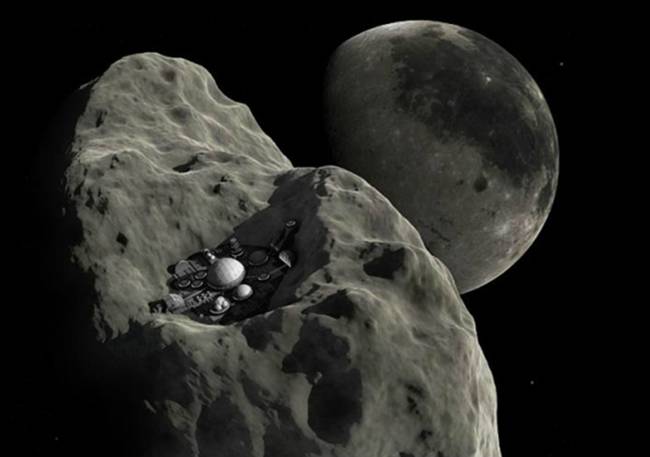No doubt you’ve heard about crowdsourcing. What you might not realize is the power of crowdsourcing that can accelerate innumerable processes and innovations more efficiently—especially in the next two years, when another billion brains will join networked computers via the Internet.
Did you know that the greatest crowdsourcing story ever told was from the mining industry? Yes, in 1990, Rob McEwen took over a mining company called Gold Corp and in 2000 launched a “Goldcorp Challenge” so anyone around the world could compete to find gold in his Canadian mine. Four of the top challenge entries were drilled—and all four struck gold, unearthing billions of dollars worth of the precious metal in places that were previously completely off the radar.
Let’s look at the two great forward-thinking organizations initiating accelerated innovation through crowdsourcing:
First, we have Space Mining by NASA. The government agency partnered with the proposed space mining corporation Planetary Resources to capitalize your spare compute time to hunt for the asteroids in the Earth’s purview through crowdsourcing.

“NASA has built the open-source code in a 170MB bundle for Windows 7 and above. The code needs 3GB of RAM to run. It is available for download now and on Github,” Iain Thomson writes on The Register. “To boost the chances of success, the firm wants to find rocks that are close and mineral rich and there’s a lot of sky to cover. By harnessing the general public’s compute time it can pick up more candidates that can be studied more closely, so the firm is acting in its own – as well as humanity’s – best interests,” Thomson added.
Isn’t that amazing?

Recently, similar to space mining, “NASA is also crowdsourcing planet Jupiter images – in which Juno mission is cruising toward the solar system’s biggest planet; right now, it’s about six months from Jupiter,” Jason Snell writes. “One of its goals is to take lots and lots of pictures of the planet. But there’s a catch: Because of the way Juno’s camera is designed and the highly dynamic nature of the planet’s cloud cover, processing images from Jupiter is going to be really tricky. So NASA is asking for the public’s help.”
The mission’s science team is asking the help of amateur astronomers to upload good images to the Juno mission website. The team will use those images as reference points to orient that Juno’s camera with the angles.

Second, we have Hyperloop Technologies – a crowd collaboration-based company developing a revolutionary and superbly efficient high-speed Hyperloop transportation system. Alex Davies shares on Wired how “the company brought together a group of nearly 200 engineers all over the world who spend their free time spitballing ideas in exchange for stock options (which will now vest), and have day jobs at places like Boeing, NASA, Yahoo!, and Airbus. They and a group of 25 students at UCLA’s graduate architecture program are working on a wide array of issues, including route planning, capsule design, and cost analysis.”

How do they do it? Davies wrote, “Each member of the team is assigned to various working groups depending on his interests and skills. Some are shuffled off to route planning, others to capsule design, and the rest to cost analysis. Work is conducted over email, and there is very little hierarchy. Still informal leaders have naturally emerged, and Ahlborn himself will be making crucial decisions if he will be required to do so.”
As more organizations continue to apply these crowd-driven approaches to innovate and solve problems, we will begin to unlock the Internet’s massive social productive capabilities and begin to understand how to solve the world’s most challenging problems collaboratively.
Can you imagine what the next two years – with the next billion people joining the Internet – will bring? Share your thoughts in the comments.




0 Comments